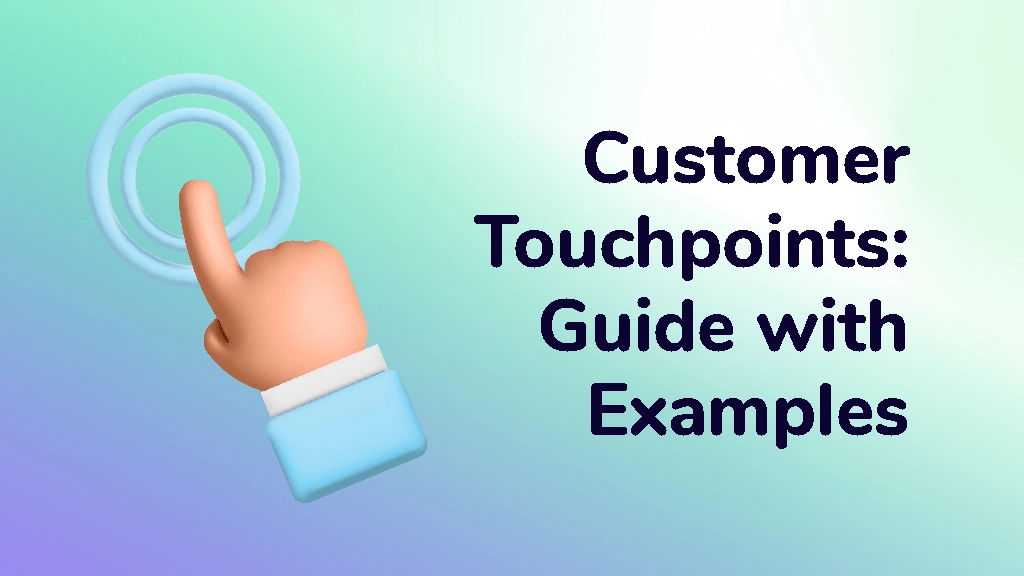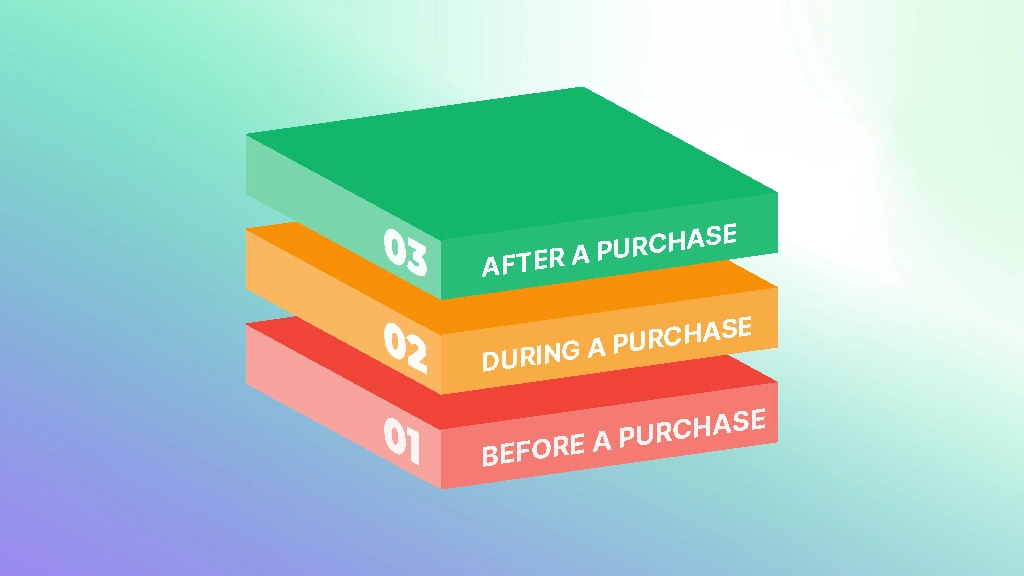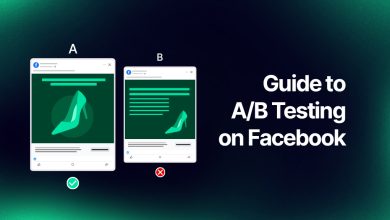Customer Touchpoints: Guide with Examples

- What are Customer Touchpoints?
- Customer Touchpoint Examples
- How to Identify Your Customer Touchpoints?
- What is the Purpose of Customer Journey Mapping?
- Improve the Customer Experience with Touchpoints
Ever wonder why some businesses have customers who keep coming back with a smile? It’s all about those special moments, customer touchpoints. These are the times when businesses connect with their customers, leaving a lasting impression.
Here, we’ll show you why customer touchpoints are important and give you real examples. We’ll guide you on creating experiences that customers love from the moments before a customer decides to buy to what happens after the purchase. Let’s start the journey of creating awesome experiences for your business!
What are Customer Touchpoints?
In the world of business, think of customer touchpoints as the special moments when your business and your customers connect. These moments are like waypoints on the customer journey, guiding them from discovering your business to becoming loyal customers. Understanding and optimizing these touchpoints is fundamental to providing an outstanding customer experience.
Why are Customer Touchpoints Important?
Customer touchpoints are the building blocks of customer experience. Each touchpoint contributes to the overall perception a customer has of a brand, influencing their decision-making process and shaping their loyalty. Positive touchpoints can turn a one-time customer into a brand’s promoter, while negative ones can lead to missed opportunities and potential customer loss.
In essence, client touchpoints matter because they are the moments that define the customer’s relationship with your brand. By recognizing and optimizing these touchpoints, businesses can create a journey that resonates with customers, building long-term connections.
Customer Touchpoint Examples
As we’ve explored the basics and importance of customer touchpoints, we can discover the various customer journey touchpoints, occurring before, during, and after a purchase. These touchpoints can be in direct and indirect forms, ranging from physical interactions in a physical store to engagements facilitated by third parties like social media influencers.
Let’s take a closer look at some examples of customer touchpoints that cover the entire customer journey;
Touchpoints Before a Purchase
Before making a purchase, customers navigate customer touchpoints that shape their decisions. From online ads to referrals, this section explores the important interactions leading up to the buying decision. Let’s explore these customer journey touchpoints examples before a purchase;
1. Online Advertising: Online ads, including pop-ups and banners, are effective tools for reaching new customers and directing them to your website. Utilize engaging graphics and messaging to attract and engage potential customers, convincing them to explore more.
2. Referrals: A referral program leverages the power of satisfied customers, encouraging them to refer friends and family by offering incentives. Provide existing customers with referral codes and offer special discounts to both the referrer and the new customer, to show your gratitude.
3. Social Media: Social media is a flexible touchpoint, introducing your brand to new customers and promoting ongoing engagement. Share valuable content that reflects your brand identity, and actively engage with your audience to build a sense of community.
4. Blog Posts: Blog posts offer valuable information and represent a meaningful customer touchpoint, showcasing your expertise and relevance. Consistently provide content that adds value to your audience, increasing your brand’s credibility.
5. Your Company Website: Your website serves as the ultimate online destination, providing a comprehensive view of your brand, products, and mission. Ensure a user-friendly design, and easy navigation, and use website surveys to get direct feedback on the user experience.
Touchpoints During a Purchase

The journey doesn’t stop at the checkout. Dive into the important touchpoints during a purchase, including chatbot conversations, customer reviews, and the point of sale, to ensure a smooth and satisfying transaction. Let’s look at these customer experience touchpoints during purchase;
1. Chatbot Conversations: Chatbots provide automated support during the purchasing process, answering common questions and requests. Use chatbot interactions to understand customer needs and streamline the purchase experience.
2. Customer Reviews: Customer reviews offer powerful social proof, influencing potential buyers during the decision-making process. Display reviews prominently on your website, social media channels, and marketing materials to build trust.
3. Point of Sale (POS): The point of sale is the final customer touchpoint before a purchase is completed, requiring a seamless experience. Whether online or in-store, optimize the checkout process to increase customer satisfaction.
Touchpoints After a Purchase
The customer journey continues with customer touchpoints that can enhance satisfaction and loyalty. Explore customer service interactions, expressions of gratitude, email newsletters, and more, designed to keep the customer relationship beyond the sale. Let’s discover these touchpoints after purchase;
1. Customer Service Touchpoints: Post-purchase, customer service touchpoints address any issues or concerns, influencing overall satisfaction. Create a self-service knowledge base to empower customers and reduce support tickets. Use customer effort score surveys for efficient issue resolution.
2. Email Newsletters: Email newsletters maintain customer engagement post-purchase, offering opportunities for upselling and sharing valuable content. Ensure newsletters provide value and excitement, keeping customers informed and interested.
3. Community Management: Community touchpoints, both online and in-person, improve customer satisfaction and create brand loyalty. Actively engage with customers on social channels, invite them to online communities, and organize in-person events to strengthen connections.
4. Subscription Renewals: For subscription-based businesses, renewal touchpoints are critical for retaining customers. Simplify the renewal process, making it easy for existing customers to continue their subscriptions.
5. Customer Feedback Surveys: Gathering feedback through surveys is essential for understanding customer emotions across customer touchpoints. Regularly conduct customer feedback surveys to identify areas for improvement and make informed decisions to improve the overall customer experience.
In our customer touchpoints journey, these examples point out the various ways businesses can engage with customers at every stage. As we continue, we’ll explore how to identify your customer touchpoints.
How to Identify Your Customer Touchpoints?
Finding your customer touchpoints is a strategic process that involves a combination of mapping the customer journey, analyzing interactions, and seeking direct feedback. Here are some tips for using Customer Touchpoints to help you navigate this essential aspect of creating a customer-centric approach
Map the Customer Journey
Begin by mapping out the entire customer journey, from the initial point of awareness to the post-purchase phase. Consider every step a customer takes, both online and offline, as they interact with your brand. This comprehensive view provides the foundation for understanding where and how customer touchpoints occur.
Within the mapped journey, identify the key touchpoints that hold significance at each stage. These are the critical moments when the customer engages with your brand, and their experience is shaped. Look for interactions that influence decision-making, increase satisfaction, or potentially lead to customer loyalty.
Analyze Customer Interactions
Use data analytics tools to systematically collect information on customer interactions. This includes digital touchpoints such as website visits, social media engagements, and email communications, as well as offline customer touchpoints like in-store visits or events. Data-driven insights help identify the channels where customers are most active and engaged.
Analyze the collected data to identify patterns and recurring touchpoints. Discover the common threads that run through customer interactions. Recognizing patterns allows you to focus on customer touchpoints that consistently play a significant role in shaping the customer experience. These insights guide targeted improvements and optimizations.
Seek Customer Feedback
Engage directly with your customers to gather valuable insights. Create channels for open communication, such as surveys, feedback forms, or even one-on-one conversations. Directly asking customers about their interactions provides valuable perspectives and highlights specific customer touchpoints that engage with them.
Implement structured feedback mechanisms, such as surveys and feedback forms, to collect quantitative and qualitative data. Create surveys that focus on specific touchpoints and encourage customers to share their experiences in detail. This combination of quantitative and valuable feedback provides a comprehensive understanding of customer sentiments.
By combining these strategies, you’ll create a dynamic framework for identifying and understanding your customer touchpoints. This foundational knowledge sets the stage for strategic optimizations, ultimately leading to enhanced and personalized touchpoints in customer experience. Let’s continue our journey toward creating meaningful connections with your customers!
What is the Purpose of Customer Journey Mapping?

Customer journey mapping is a strategic tool that visualizes the end-to-end customer experience. It provides a comprehensive perspective of the customer’s interactions with your brand, helping identify pain points, opportunities for improvement, and areas where customer touchpoints can be enhanced.
Key Steps in Customer Journey Mapping;
- Define Customer Personas
- Identify Touchpoints
- Evaluate Customer Emotions
- Highlight Pain Points and Opportunities
- Collaborate Across Teams
- Repeat and Update
Improve the Customer Experience with Touchpoints
Improving the customer experience involves a holistic approach that focuses on optimizing every customer touchpoint. Here are some practical strategies to elevate the overall customer journey;
Personalization: Tailor customer touchpoints based on customer preferences, history, and behavior for a more personalized experience.
Consistent Branding: Ensure a consistent brand message and experience across all touchpoints to build brand trust and recognition.
Proactive Communication: Anticipate customer needs by proactively communicating information, updates, and relevant offers.
Omnichannel Integration: Seamlessly integrate online and offline touchpoints to create a unified and seamless customer journey.
Employee Training: Train employees to deliver exceptional customer experiences at every touchpoint, increasing customer satisfaction.
Continuous Monitoring: Implement tools for continuous monitoring of customer interactions and feedback to stay agile in addressing evolving needs.
Innovation and Adaptation: Embrace innovation and adapt to industry trends, ensuring your touchpoints remain relevant and impactful.
In conclusion, understanding and optimizing customer touchpoints are essential to building lasting relationships and increasing customer loyalty. By identifying customer touchpoints, mapping the customer touchpoints, and continually improving the overall experience, businesses can succeed in today’s customer-centric landscape.

Why is Optimizing Customer Touchpoints Beneficial For Businesses?
Optimizing customer touchpoints is essential for business success. It directly influences customer satisfaction, loyalty, and positive brand perception. A streamlined customer journey also enhances operational efficiency, providing a competitive edge by delivering exceptional experiences.
What Customer Touchpoints Are Evaluated During a Core Visit?
During a core visit, key touchpoints evaluated include the initial interaction (online or in-store), purchase process efficiency, post-purchase interactions like delivery, and customer service responsiveness. Assessing these touchpoints provides a complete picture of the customer journey and highlights areas for improvement.
How To Optimize Consumer Touchpoints in the Customer Journey?
To optimize consumer touchpoints, understand your customers, streamline processes, listen to feedback, maintain consistent messaging, and embrace technology for an enhanced journey. This ongoing improvement ensures a delightful and lasting customer experience.



